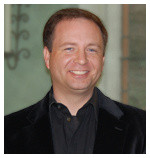Monday, May 24, 2010
Determining Curriculum (part one)

The apostle Paul said in 1 Corinthians 11:23, “For I received from the Lord what I also passed on to you.”[1] Paul is discussing various practices regarding the Lord’s Supper, but in a broader interpretation he is also sharing something he has learned regarding Jesus and is passing it on in the form of his teaching to another.
What was taught by the apostle Paul has been passed down from one generation to another. This transferring of information has gone on for centuries. The shape that this transfer of knowledge takes is called the curriculum. Brummelen explains, “Curriculum is what is taught, particularly the subject matter contained in a school’s course of study.”[2] This choice of what to teach and what not to teach is a mighty trust, and despite heresies, wars, and false teachers, the Bible has come to this generation without any error. Brummelen goes on to say, “Academic traditionalists plan curriculum by dividing the program of study into subjects. Then they list the content to be taught by topics and subtopics. Implicit in the definition is the belief that the aim of education is to transit a body of knowledge.”[3]
In any teaching environment there must be the determination of what is to be taught to the next generation. What information is to move forward? In the church environment some purchase dated curriculum and are dependent upon the publishing house, to a certain degree, to determine what they will teach their children for a given period of time. So they abdicate the responsibility to choose what to teach to another source. Other churches write their own curriculum and therefore have a high degree of control over what is taught, but these are few and tend to be churches with a larger membership base.[4] Others do little planning or find something to teach on a week-to-week basis. Whatever the scope of the ministry, at some point someone has to choose what will be taught in the classroom.
Barna has argued that the most successful children’s ministries are those who have determined what each age group will be taught and have a plan for a child all the way through their ministry. He argues that those churches that plan for all of a child’s years in a church environment are the ones that have the most successful impact upon their spiritual formation. Barna states, "One of the most startling revelations I encountered on this journey was finding that many of the effective ministries have a long-term plan—in some cases an 18-year developmental plan with specific ideals outlined for each age group from infants through high school seniors. While those churches allow for spontaneity and flexibility despite their long-range planning, they are fully committed to implementing their “big picture” plan.[5]"
The first problem is to determine the foundational doctrines that children should be taught, what Barna refers to as their “big picture” plan. It is a harder task than one may originally think. If one begins with the assumption that the average church teacher has a student for one to two hours on a given Sunday, then the volume of optional teaching material from the Bible far outweighs the available time in the classroom. How then does the teacher, church, or publishing house determine what to teach, and what not to teach? Is there a biblical mandate? Is there a traditional point of reference? What did the people who have chosen to face this question come up with, and what was their rationale for the choices that they made?
These questions can begin to be answered by going back to the beginning of the early church. With the passing of Passover and Pentecost in Acts chapter 2, thousands were saved and then proceeded to go back to their homes in areas other than Jerusalem. Because of this movement of God, new churches were beginning to form by the apostles and unnamed believers who went back to their home towns. Antioch is an example of such a church that formed soon after Pentecost, by someone other than an apostle. The apostles were concerned for the doctrinal integrity of this church since they had not personally been present to teach them the Scriptures, so they sent a group to examine what was happening.[6]
In order for these new churches to grow, and for others to be founded, the apostles felt that there was a need to have a more systematic form of instruction to ensure the “authenticity of faith and consistency in practice.”[7] What developed was a document entitled “Didache.” It is a church manual or handbook for the training of new believers. This document also resulted because of the apostles’ concern that their teachings remain doctrinally pure and that the content survive after the transmission from person to person.[8]
During the early church there also developed the practice of catechism and catechumen. These words are derived from Greek words meaning to “instruct.” This would be a course of instruction that had three levels of instruction and would take from two to three years to complete. It was only after a person had gone through catechism that they would be allowed to be a part of the local fellowship of the church.
There are at least two reasons why this was necessary during the time of the early church, but may not necessarily apply today. First, very few people could read, and so the process of having a teacher give oral instruction and then have the student quote material back was a very effective method of teaching. For the purposes of this discussion, the researcher is only referring to churches in the United States, so literacy does not effect the spiritual formation of most churches.
Second, the church was under great persecution; therefore, this stress could cause the new convert to recant their faith. The early church leadership wanted to give a person enough time to grow in their faith and learning so when they were baptized and became apart of the church they would be doctrinally sound and mature in their faith. The catechism “declined in its effectiveness once it became expected of children to be baptized and when pagans, lacking genuine motivation for joining the faith, were commanded by law to attend church.”[9] Therefore, when following the Christian religion became state mandated, the need to prepare new believers for a persecuting world no longer existed.
Just as in the times of the early church, there is still a need to maintain scriptural integrity and doctrinal purity. Unlike the early church, however, today’s church has the complete canon of Scriptures, which are inerrant. History then does give some foundational thoughts regarding what is essential to a scope of teaching, and it does give an outline for priority. One could study early catechisms to see what the early church found to be of most importance.
Another source of deciding what to teach could be various Christian creeds. The Apostle’s Creed, for example, also gives several foundational Christian beliefs that could be a church’s core teaching to its children.
To answer the question of how these decisions are made today, the researcher contacted three publishers of children’s ministry curriculum. Their responses are given in subsequent articles. Following their responses is overview of the interviews, and remarks will be made at the end of the interview descriptions.
[1] 1 Cor 11:23, NIV
[2] Harro Van Brummelen, Steppingstones to Curriculum (Colorado Springs: Purposeful Design, 2002), 13.
[3] Ibid.
[4] For example, Willow Creek Community Church publishes a children’s ministry curriculum entitled “Promiseland” and can be found at www.willowcreek.org/promiseland. Another example would be Fellowship Church which produces “Elevate” and can be found at www.creativepastors.com/elevate.php. These curriculums are used within their own church and are available for other churches to purchase.
[5] Barna, Transforming Children Into Spiritual Champions, 100.
[6] Acts 11:23
[7] Anthony and Benson, Exploring the History and Philosophy of Christian Education, 107.
[8] Ibid., 109.
[9] Ibid.
Subscribe to:
Post Comments (Atom)
Gospel Magic

how did he do that?
About Me

- Drew Boswell
- I am the father of four wonderful children and the husband of the best woman on the planet. I am pastor at Daybreak Community Church, check us out at www.daybreak-church.com. I also have a web site at www.drewboswell.com.
Aren't Getting Our Newsletter?
Blog Archive
-
▼
2010
(64)
-
▼
May
(9)
- Cub Scout Camping "OverNighter"
- Determining Curriculum (part one)
- A Religious Man
- Brent's Baptism
- The Importance of Continued Education in Ministry
- Digging For Gold, Found Alot of Rocks
- New Sermon Series Begins this Sunday
- Understanding Roles of Church and Home (Part Five;...
- Understanding Roles of Church and Home (Part Four;...
-
▼
May
(9)




0 comments: